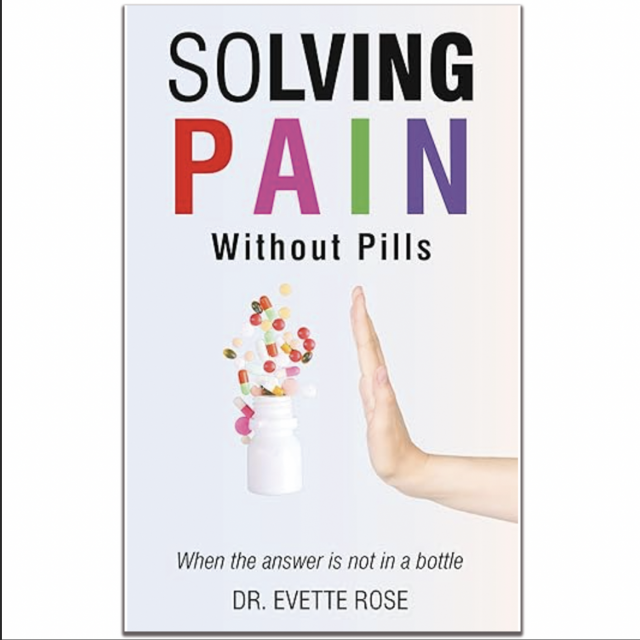Article by Dr. Evette Rose
(Isstories Editorial):- Los Angeles, California Jun 17, 2025 (Issuewire.com) – This new release reveals what pain is really trying to tell you — and how to heal it for good.
More on Isstories:
- Claim Time Solicitors educates the public on “No Win No Fee” misconceptions
- International dancer Roberta Di Laura among top 100 Italian Excellences
- ExposeJustice.com Launches to Reveal Documented Due Process Violations and Urges Oversight of the U.S. Justice System
- Migo – Sell Gift Cards Launches Secure Paysafe Card Trading Service for Users in Nigeria and Ghana
- Brian Baldari’s View: Why the Structural Discipline of a Dedicated Athlete is the Key to Unlocking High-Performing Teams
For decades, chronic pain sufferers have been told to manage their condition through medication, surgery, or symptom-based interventions. Yet millions continue to suffer, despite countless appointments, escalating prescriptions, and mounting frustration. Why?
Because the root cause of pain often isn’t being treated — or even recognized.
“Pain isn’t just physical,” Rose writes. “It’s emotional. It’s energetic. It’s personal. And most importantly — it’s solvable.”
A Mind-Body Healing Blueprint
What sets Solving Pain Without Pills apart is its integration of neuroscience, somatic healing, and trauma resolution. The book explores how the vagus nerve, polyvagal theory, and stress-induced dysregulation influence chronic pain (Porges, 2011).
Rose explains how traumatic imprints stored in the subconscious nervous system continue to trigger fight-flight-freeze responses, long after the threat has passed — keeping the body locked in survival mode and amplifying pain.
Inside the Book, Readers Will Learn:
‘ How emotional trauma, stress, and repressed grief impact the nervous system and pain pathways
‘ Why conventional medicine often fails to identify the true origin of pain
‘ Tools to retrain the brain’s pain response through neuroplasticity and emotional regulation techniques
‘ How breathwork, somatic tracking, and self-inquiry can calm the nervous system
‘ Real-life stories of individuals who overcame debilitating pain without medication
Research supports this integrative approach. For example, interventions that include emotional awareness, expressive writing, and mind-body regulation have been shown to significantly reduce pain severity (Lumley & Schubiner, 2019).
Furthermore, somatic-based therapies like body scan meditation, guided imagery, and nervous system retraining can downregulate sympathetic arousal and restore balance (Garland et al., 2019).
Who This Book Is For
Solving Pain Without Pills is a vital resource for anyone living with:
-
Chronic back pain
-
Migraines and tension headaches
-
Fibromyalgia
-
Medically unexplained symptoms
-
Autoimmune-related pain
-
Emotional burnout or trauma-related symptoms
It’s also ideal for professionals in the fields of integrative medicine, mental health, coaching, or physical therapy who want to deepen their understanding of the emotional body.
Want to Learn More?
Meet me at: https://www.metaphysicalanatomy.com
Instagram: https://www.instagram.com/dr.evetteroseofficial
References
Anda, R. F., Felitti, V. J., Bremner, J. D., Walker, J. D., Whitfield, C., Perry, B. D., … & Giles, W. H. (2006).
The enduring effects of abuse and related adverse experiences in childhood: A convergence of evidence from neurobiology and epidemiology. European Archives of Psychiatry and Clinical Neuroscience, 256(3), 174-186.
https://doi.org/10.1007/s00406-005-0624-4
Garland, E. L., Brintz, C. E., Hanley, A. W., Roseen, E. J., Atchley, R. M., Gaylord, S. A., & Keefe, F. J. (2019).
Mind-body therapies for opioid-treated pain: A systematic review and meta-analysis. JAMA Internal Medicine, 179(1), 91-105.
https://doi.org/10.1001/jamainternmed.2018.5143
Lumley, M. A., & Schubiner, H. (2019).
Emotional awareness and expression therapy for chronic pain: Rationale, principles and techniques, evidence, and critical review. Current Rheumatology Reports, 21(7), 30.
https://doi.org/10.1007/s11926-019-0829-6
Lumley, M. A., Cohen, J. L., Borszcz, G. S., Cano, A., Radcliffe, A. M., Porter, L. S., … & Keefe, F. J. (2011).
Pain and emotion: A biopsychosocial review of recent research. Journal of Clinical Psychology, 67(9), 942-968.
https://doi.org/10.1002/jclp.20816
Porges, S. W. (2011).
The polyvagal theory: Neurophysiological foundations of emotions, attachment, communication, and self-regulation. W.W. Norton & Company.
Tracey, K. J. (2010).
Reflex control of immunity. Nature Reviews Immunology, 10(6), 398-406.
https://doi.org/10.1038/nri2776
Volkow, N. D., McLellan, A. T., Cotto, J. H., Karithanom, M., & Weiss, S. R. (2016).
Characteristics of opioid prescriptions in 2009. JAMA, 305(13), 1299-1301.
https://doi.org/10.1001/jama.2011.401



This article was originally published by IssueWire. Read the original article here.

















